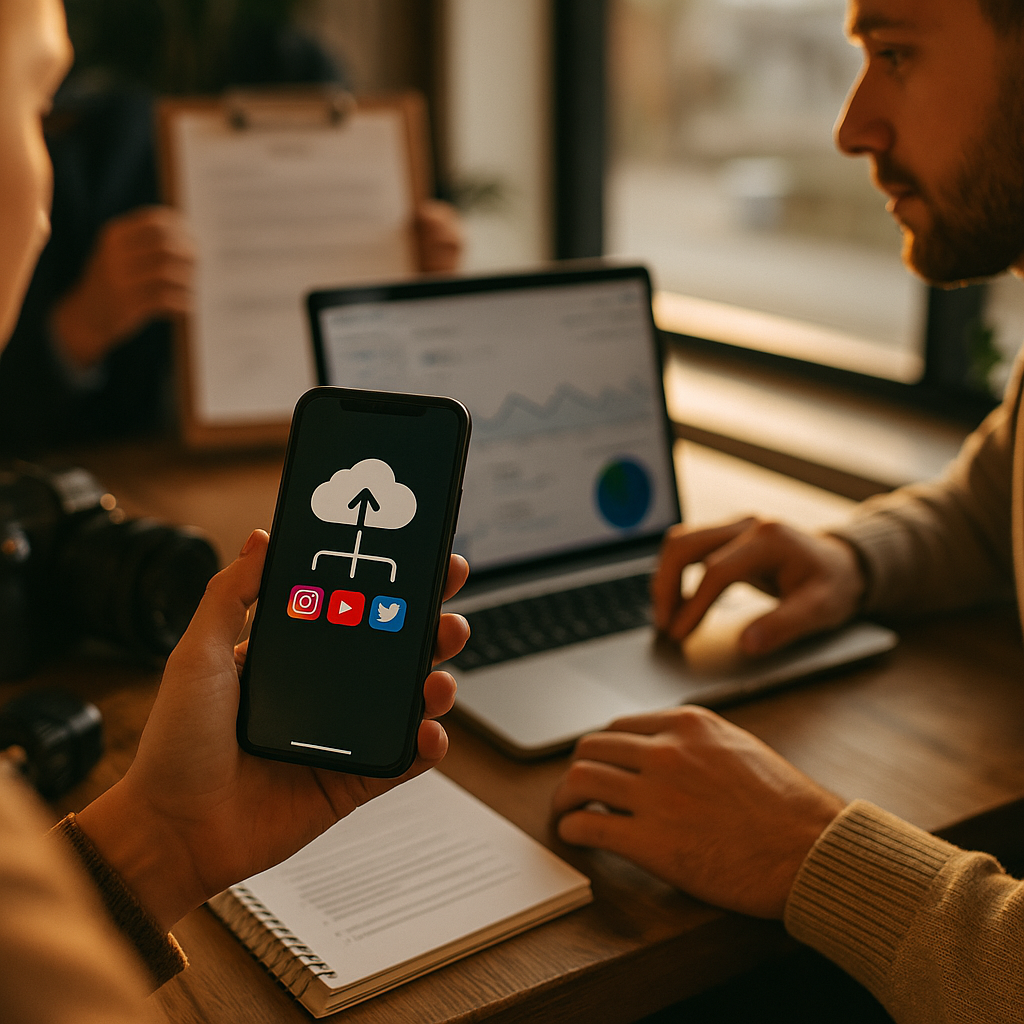Data portability is redefining how creators and brands interact, collaborate, and grow in 2025. By empowering creators to transfer and manage their audience insights, brands can build smarter, more transparent partnerships. But how does this shift impact trust, negotiations, and outcomes in influencer marketing? Let’s explore why understanding data portability is vital for modern creator-brand relationships.
Understanding Data Portability: The Backbone of Digital Empowerment
Data portability refers to the ability of individuals and businesses to freely move their data between platforms, applications, or services without restrictions or data loss. For creators and brands, this right has transcended digital convenience—it’s a new standard for control and transparency. With regulations like the GDPR encouraging secure and user-friendly data transfers, creators now expect to own and manage the data surrounding their content, audience, and collaborations.
For brands, data portability opens up direct access to audience insights without long-term platform lock-in. As creators increasingly operate across Instagram, YouTube, TikTok, and emerging networks, the ability to transfer data enables multipoint collaboration and a deeper understanding of what truly engages target audiences. In 2025, this is no longer a nice-to-have; it’s table stakes.
Why Data Portability Matters for Influencer Marketing Dynamics
Influencer marketing has matured rapidly, but data fragmentation remains a pain point. Brands rely on performance data—reach, engagement, demographics—to inform decisions. Without data portability, these insights are siloed or controlled by third-party platforms, limiting transparency and verification. With portable data, creators can seamlessly provide brands with high-quality analytics, proof of impact, and relevant audience breakdowns that span multiple platforms.
This transformation benefits both parties:
- Brands gain direct, consent-based access to valuable data, reducing reliance on intermediaries or manual reporting.
- Creators can leverage a portable data portfolio to showcase value, negotiate stronger deals, and manage their professional identity across platforms.
Ultimately, data portability gives rise to confident, informed partnerships—an essential foundation for the evolving creator economy.
How Data Portability Builds Trust and Transparency Between Creators and Brands
Trust is the linchpin of every creator-brand collaboration. Data portability supports this by allowing for:
- Verifiable Results: Brands can independently verify data, improving accountability and credibility.
- Consent-Based Sharing: Creators hold the keys and choose what they share, ensuring privacy compliance.
- Real-Time Transparency: Fast, accurate data transfer limits delays and misconceptions over campaign results.
This open exchange encourages ongoing communication. Many brands are now requesting portable data as part of every influencer contract, using third-party tools compliant with privacy standards. In turn, creators feel empowered to clarify the narrative around their unique audience, fostering long-term relationships rooted in mutual benefit.
Data Portability and Negotiation Power: The New Creator Currency
When creators own and manage their performance data, they can tangibly prove their influence. In 2025, brands increasingly request specific datasets—such as audience overlap scores or post-level engagement rates—before signing deals. Creators who can port this data from TikTok, Instagram, and newsletters stand out in negotiations.
This shift results in:
- Higher Earnings: Clear, cross-platform performance data justifies higher rates and incentivizes repeat work.
- Platform Flexibility: Creators aren’t tied to a single channel and can expand their reach more confidently.
- Personal Brand Growth: A transparent track record builds reputation for both creators and their partners.
Negotiation is no longer about vague estimates; it’s about demonstrable impact, powered by portable data.
Navigating Security, Consent, and Privacy with Portable Data
With new powers come new responsibilities. Both creators and brands must prioritize data security, privacy, and regulatory compliance while using portable data. Creators should:
- Utilize secure, verified third-party data transfer tools.
- Ensure explicit audience consent, especially for granular demographic sharing.
- Regularly review the privacy policies of platforms and services.
Brands need to request only the data they legitimately need and store it according to legal obligations. Following these best practices, creator-brand partnerships can thrive without risk to audience trust or privacy law compliance.
Future Trends: The Impact of Data Portability on Creator-Brand Collaboration in 2025
As the creator economy matures, data portability is expected to catalyze several trends:
- Interoperable Analytics: New platforms will allow seamless, visual cross-platform data aggregation for both creators and brands.
- Standardized Contracts: Data portability clauses will become routine features in creator-brand agreements.
- More Inclusive Campaigns: Brands will collaborate with niche creators who can prove diverse audience value, fostering inclusivity.
- Greater Automation: AI-driven tools will streamline how data is transferred, interpreted, and acted upon.
The result? A fairer, more efficient collaboration model that brings measurable value to both sides, driving the entire influencer marketing industry forward in 2025.
FAQs about Data Portability and Creator-Brand Relationships
-
What is data portability in the context of creator-brand partnerships?
Data portability allows creators to move and share their audience and performance data between platforms, giving both creators and brands transparent, accurate insights for collaboration.
-
How does data portability benefit creators?
Creators gain control over their analytics, making it easier to prove their value to brands and negotiate better deals, while also expanding their opportunities across multiple platforms.
-
Are there privacy risks with data portability?
Security and consent are essential. Both parties should use secure transfer tools, request only necessary data, and comply with privacy laws to minimize risks.
-
Do brands require certain types of data portability?
In 2025, most brands expect creators to provide accessible, cross-platform analytics, especially audience demographics, engagement, and reach from trusted sources.
-
What are the main challenges of data portability for creators and brands?
Main challenges include ensuring compliant data transfer, maintaining security, and interpreting insights from multiple platforms cohesively.
Data portability is transforming creator-brand relationships by unlocking transparency, negotiation power, and trust. In 2025, both creators and brands that embrace secure, compliant data sharing will thrive in a fairer, more collaborative influencer marketing ecosystem.
